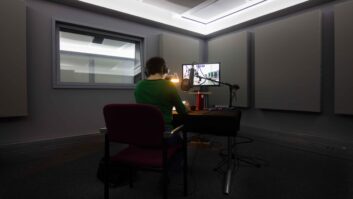Support for the recently defined BT.2020 colour space for Ultra HD production is a key feature of new firmware upgrades for Canon’s EOS C500 and EOS C300 Digital Cinema Cameras, DP-V3010 4K reference display and Cinema Raw Development (CRD) software. The firmware (scheduled for release as free downloads later this year) should better integrate acquisition and management of 4K.
The ACESproxy transfer standard advocated by the Academy of Motion Picture Arts and Sciences will also become an option, enabling streamlined colour grading on set and in post for both the C500 and the 30-inch DP-V3010. The DP-V3010 will also become the first 4K professional display to support the 48fps digital cinema frame rate.
The new firmware will also output footage shot using the Cinema Gamut and DCI-P3+ colour spaces available in EOS C500, simplifying monitoring and post production work. Footage can be displayed using either DCI-P3 or BT.709, with optimised conversion occurring in the display.
The upcoming firmware upgrade for Canon’s Cinema Raw Development software – CRD v1.3 – will continue to improve on-set Raw workflow, adding BT.709 and DCI-P3 playout options, and EDL support, and is claimed to make 4K Raw production more cost effective.
The new firmware upgrade also includes a useful feature for the C500 and C300, allowing users to easily set colour temperature values using the camera’s FUNC button.
Improved performance is also on offer thanks to a collaboration with Intel, whose Integrated Native Developer Experience Raw Media Accelerator enables fast de-bayering and drop-free playback of the resulting 4K footage (up to 24 frames per second only) when using a laptop equipped with Intel Iris Pro Graphics. It is showing that it’s possible to edit, develop, playback and output 4K Raw footage using a single, suitably specified, low-power laptop.







